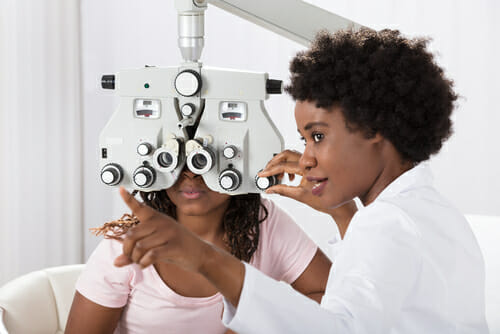No matter who you are, it’s likely you’ll have issues with your eyes at some point in your life. Eye conditions are extremely common, especially in older adults.
But children and young adults are also subject to visual errors and eye conditions. Everyone should see an eye doctor regularly.
You should also see one if you experience any concerning eye symptoms. Here are 7 signs that you need to go to the eye doctor.
1. Your Eyes are Itchy, Irritated, or Inflamed
Most people aren’t a stranger to eye irritation. Being allergic to pollen is quite common.
But allergies are far from the only cause of irritated eyes. They can indicate a variety of illnesses, from dry eye syndrome to pink eye.
If you experience these symptoms and don’t have allergies or the symptoms persist after taking allergy medication, see your eye doctor.
2. You’ve Had a Harder Time Reading
If you have a refractive error, you probably were diagnosed when you were young. You may even already see your eye doctor for regular eye exams to update your prescription.
But if you’re 40 or older and are having more trouble with detail-oriented tasks like reading, you may have cataracts, presbyopia, or both. Your eye doctor will be able to diagnose you if you have cataracts and suggest treatment options for presbyopia.
3. You Have Trouble Driving at Night
Driving at night is dangerous when you can’t see properly. Sometimes it’s hard to recognize this problem when you have no problem with driving during the day.
For many people, having difficulty driving at night can be a sign of cataracts. But if you’re struggling to see at night while driving, the best thing you can do is see your eye doctor for an eye exam.
This will allow your ophthalmologist to rule out any other eye problems or issues with your sight that could be going on.
4. Your Eyes are More Sensitive to Light than Normal
Sensitivity to light can be a symptom of a variety of issues besides cataracts. It can be a symptom of inflammation, a migraine, or, rarely, a serious illness like a viral infection.
If you experience sensitivity to light, see an eye doctor. If the issue isn’t cataracts or another visual problem, they’ll recommend you see your primary doctor. It’s best to get your eyes checked first and see other doctors after.
5. You Experience Frequent Eye Strain and Headaches After Using Screens
More people work on computers, making Computer Vision Syndrome (CVS) much more common. If you experience headache, eye strain, or dry eyes, you should see your eye doctor.
There’s a chance these are symptoms of a more serious issue, but even if it’s CVS, they can recommend ways to reduce your symptoms.
6. You Often See Floaters, Flashes of Light, or Spots
Suddenly seeing floaters and spots along with flashes of light is a sign of a serious problem. These are the primary symptoms of a retinal detachment.
Retinal detachment requires prompt treatment to salvage your retina and save your vision. If you can’t get an immediate appointment with your eye doctor, go to the emergency room.
They will be able to refer you to an eye specialist for prompt treatment.
7. You Haven’t Had an Eye Exam In Over a Year
Even if your eyes feel healthy, you should see your eye doctor regularly for routine eye exams. When you’re 40 and older, this is especially important.
Many age-related conditions don’t have physical symptoms in their early stages. If you’re 50 and older, or have diabetes, it’s extremely important to have eye exams at least once a year.
Your eye doctor may recommend more frequent eye exams. Early diagnosis can save your vision from common conditions like glaucoma, macular degeneration, and diabetic retinopathy.
Can’t remember the last time you had an eye exam? Schedule one at Sierra Nevada Eye Center in Carson City, NV! There’s never a bad time to prioritize your eyes!













